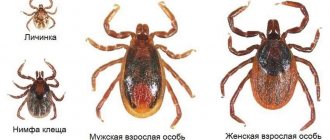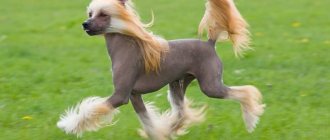It is believed that dogs wag their tails because they are happy. But some veterinarians give other explanations for why a dog wags its tail and what it means. Let's try to understand the intricacies of pets' body language and determine what they signal when they move their tail.
The extension of the canine spine is designed to perform several tasks at once: to maintain balance and for communication. Because of this, the reason for the wagging tail must be sought in some external factors. After all, they are the ones who make the animal experience certain emotions.
What is the tail for?
The tail is useful in expressing feelings
Most will answer: to express dog feelings. Almost so, but in addition to reflecting the psychological state of the animal, the tail also serves other purposes. For example, to maintain balance when running, swimming, overcoming obstacles, jumping. Initially, scientists keen on studying animals were sure that the tail was given to the dog only to maintain balance.
Time passed, it turned out that balance is a necessary thing, but that’s not all. The tail, or rather what is hidden under it, is the dog’s calling card. And to be completely precise, its real passport, which the animal is presented to its inspecting relatives. The fact is that paraanal glands are hidden under the tail, emitting a specific smell. When they meet, the dogs begin to wag their tails, dispersing this smell around. It “stores” the information necessary for the opponent: gender, age, state of health, and even confidence or lack of confidence in one’s own abilities.
You can often see how dogs behave when they meet each other. One raises its tail high, actively waving it. And the second, on the contrary, tucks its tail to its stomach, ingratiating itself with the first dog. This suggests that the first dog is self-confident and dominant, and the second one is timid and insecure.
Wariness and suspicion
The tail is extended almost parallel to the ground and trembles slightly, the withers are calm - the dog is waiting, it can start the game and is ready to defend itself, depending on the behavior of the other party.
If the tail is raised and tense, the hair on the withers rises like the crest of a dinosaur, then the dog senses danger and is preparing to attack. Many dogs, especially service breeds, are of the opinion that the best defense is an attack. The situation can develop in different ways: a tug on the leash will provoke aggression, but a calm admonition from the owner, on the contrary, will resolve the matter peacefully. At such moments, it is useful to distract the dog with the command “Sit” and “Next”.
The raised tail is characteristic of alpha males. Such dogs are confident in themselves and prefer to find out the situation until the end. Serious fights are very rare, if they even happen. One dog will put the other down, stand over him, holding his head above the withers, and move away. It is not uncommon for confidence to allow a smaller, physically weaker dog to dominate others. And the intelligence of such dogs is above average.
So why does the dog wag at them?
Master, I'm glad to see you!
Tail wagging is a reflection of the dog's condition. The faster the amplitude of movement, the more excited the pet is. But, in addition to the tail, you also need to look at the animal’s face. If a dog smiles from the top of his mouth, waving his tail at the speed of light, he is happy. Most likely, the dog saw his beloved owner after separation from him.
And if the tail is lowered and extended, its movements are light, slightly trembling - this indicates the dog’s alertness. It has been proven that pets wag their tail not only during joyful moments, but also when demonstrating fear or aggression.
An interesting point: a friendly pet begins to wag its tail to the right side. When the dog is alert or aggressive, the movement begins on the left side. This conclusion was reached by scientists from an Italian research university. More than 40 dogs were used as “experimental” groups. Half were shown an image of a fellow animal standing silently, the other half was shown a picture of its tail wagging left and right.
During the experiment, both groups of dogs had their heart rate recorded and their behavior observed. The first group, seeing their relative standing silently, froze. Some of the dogs in this group tried to wag their tails, but most became wary and their heart rates increased greatly.
The second group, seeing a dog wagging its tail to the left, showed a rapid heartbeat. And when they saw their own kind, starting to move their tail to the right, the animals responded in the same way, the heart rate remained at the same level.
It is extremely rare, but dogs can wag their tail when alone with themselves. As a rule, at such moments the animal’s head is lowered, and the movements of the tail are subtle. This state reflects complete relaxation and tranquility.
Guilt and shame
If the dog feels guilty or is not sure that its behavior will be approved, then the tail wags faster and the amplitude of the waving is greater than in previous cases, but the tail is still lowered and the neck is tilted. It must be taken into account that the dog may not realize exactly why he is being scolded, especially if time has passed, but the owner is always right and if he scolds, it means there is something for it.
The most frequent movements of the tail
Smile and wave!
The most commonly seen movements are:
- short and quick tail swishes;
- wide and sharp;
- slow, tail down.
- fast, with tail held high.
Now in more detail about each case. When the animal's tail is level with its back, the strokes are short and quick, indicating a friendly greeting. The pet is happy to see its owner, but not so happy that it actively wags its tail, screams throughout the house and smiles with all its teeth.
In the second option, the tail is also at the level of the back. But its movements are fast and wide, sometimes so much so that it seems as if the pet is about to hit itself with it. Usually, such wagging is accompanied by a joyful expression on the muzzle, whining, shifting from paw to paw, and a smile from ear to ear. In general, the pet is excited, which is reflected in its behavior.
Wide and sharp movements of the tail say: master, I am so glad to see you! I feel so good next to you! I love you!
As for the third option, in which the dog’s tail is lowered and the wagging is slow, the animal does not want to communicate. The dog showed good manners, expressed joy at the sight of his owner, but was not at all inclined to communicate. Another reason why a dog slowly wags its lowered tail is a lack of confidence in the surrounding environment. The animal is simply uncomfortable here and now.
And finally, quick movements with the tail held high. This position of the tail indicates maximum concentration and excitement of its owner. If you look closely at the dog at this moment, you will notice tension throughout the body, a slightly raised head, and wariness in the gaze. The animal is watching something; it is possible that the object of observation poses a threat to the dog. The pet decides whether to attack or wait a little longer and watch.
Oh yes, the most important thing! If a person meets a dog on the street, and it seems friendly because it wags its tail, there is no need to rush to get to know the animal. Movement of the tail, combined with ears pressed to the head and a tense body, indicates the dog’s fear. And a frightened dog, trying to defend itself, is quite capable of attacking. Why should she defend herself from someone who wants to meet her? The fact is that the dog does not know with what intentions the person is heading towards him.
Calm and interested
The tail hangs calmly in the middle - the dog is calm, it is self-confident and is simply waiting for events to develop. Dogs are very impatient and very soon the tail begins to wag slightly and the dog looks at the owner, waiting for his order. If the order is not given, then she will try to change position - sit or lie down.
Also, weak wagging of the lowered tail occurs when the dog does not understand the situation, but does not feel anxiety. In the presence of the owner, the dog is calm, but uncertainty confuses him, and the dog may begin to yawn.
When they see an unfamiliar object, dogs become wary, they are interested and a little scared. This usually occurs in puppies or adolescents. They do not have a well-established pattern of behavior and rely on instinct. The tail is lowered or slightly raised, depending on the dog's confidence, and quivers. The owner should lead the dog to such an object (it could be a balloon or a newspaper in the bushes), calmly convincing the pet that everything is in order and there is nothing to be afraid of.
An interesting hypothesis about the wagging dog's tail
The cerebral hemispheres are to blame for everything
Just recently an article was published by a neuroscientist working at the University of Trent (Italy). Mr. Giorgio Vallortigara claims that the hemispheres of the dog's brain are responsible for the differences in the movements of a dog's tail. When the left hemisphere is responsible for performing a certain function, the dog begins to wag its tail in that direction. In the case of the right hemisphere, tail movements begin on the right. Allegedly, the dog unconsciously wags its tail; in this action there are no “pitfalls” such as a reflection of its condition.
Perhaps pundits will study this hypothesis. But the Italian neuroscientist is unlikely to be right, since it has long been known in what cases dogs wag their tail.
Aggression and anger
If the dog is aggressive (the result of poor upbringing or its complete absence), then attacks of aggression are observed when meeting another dog. The dog begins to tear, the tail behaves very actively - the dog can whip itself with its tail, twist it. Exhortations are useless. You need to sharply pull the dog towards you and give the command in a voice: “Near”, “Stand”.
Even if the dog waves its tail very complacently, it should be taken into account that for the dog the situation is changing, but the person is not aware of it. The outstretched hand of a stranger, for example, sharply changes the mood of a guard dog in the direction of protection, and an attack ensues.
Satisfaction and joy
When the tail wags cheerfully, the dog is satisfied and happy. At exhibitions, a “happy tail” causes a lot of anxiety for owners, if, for example, the requirements for the tail are elongated, like Labradors, or drooping, like German Shepherds.
The higher the dog's excitement, the more active the tail behaves. Dogs react this way not only to living beings - people whom they especially enjoy meeting, dog friends - but also to pleasant events. It’s not clear how, but they sense them. This could be a trip to the forest to pick mushrooms, or a car trip to the lake.
What difficulties do dogs with short tails face?
Dogs that naturally have a short tail, and those that have lost it for certain reasons, find it more difficult to communicate with their relatives and with humans. They cannot always find a common language with other dogs. But they have another way to “speak” about their emotions - by choosing a suitable pose and wagging their stump.
Young dogs do not always understand such gestures. An animal may not want to communicate with another dog, but an inexperienced dog may interpret this in its own way and start playing. It is better to approach dogs with docked tails slowly in order to intercept their reaction.
The tail, one of the most expressive parts of a dog
Along with the ears, the tail is the most important part of a dog's body when it comes to interpreting his emotions, feelings and moods. Below we list all the answers to the question why dogs wag their tail:
- Happiness
- Do you want to play?
- Alert
- Indecisiveness
- Communication with other dogs
- Calm
- Sadness
- Fear
In some cases, tail movements are closely related to communication, so amputation is a cruel act that will prevent him from interacting with other dogs, animals and people. Let us recall that the tail is nothing more than an extension of the spinal column and is formed by the caudal or coccygeal vertebrae (from 20 to 23). Regardless of the shape of a dog's tail (straight, curved or curled), since it is the end of the spine, it helps maintain balance, another very important reason why it should not be amputated.
Fear and Submission
If the tail is in a position between the paws - tucked, then the dog experiences discomfort, more often it is fear, but it happens that the dog simply has nowhere to go and avoid unpleasant communication with someone. This could be a pestering dog, an annoying child (children love to grab a dog's tail, which is understandable, but dogs really don't like it) or, unfortunately, a veterinarian.
The submission position in front of a dominant dog is also characterized by a tail tucked, the rear bent to the ground and the dog demonstrates its submission by opening its neck (by moving or lowering its head).
Scientists searching for an answer
Italian scientists, in order to figure out why dogs still wag their tail, organized some research. Their goal was to understand how much an animal’s behavior depends on the functioning of a particular brain hemisphere at a given moment. Thirty dogs were observed. When a positive stimulator appeared (the owner, a familiar relative), the dog showed good emotions by wagging its tail with a predominant tilt to the right. Positive emotions and behavior are regulated by the left hemisphere.
When the dog was offered an unpleasant stimulant - a cat, a strange dog, a person with whom the animal was not familiar, the tilt of the tail changed in favor of the left side. The right hemisphere provides survival functions.
The study concluded that any dog that perceives such signals can interpret them. When an animal meets its relative, it analyzes the direction of the tail and already knows what to expect from the dog.
The reason for the unequal movements of the body and tail in particular is the different functions of both hemispheres of the brain. That is, the direction of movement depends on which hemisphere is activated at the moment. In general, this indicator indicates a significant evolution of this species, because it helps the animal survive among other inhabitants.











